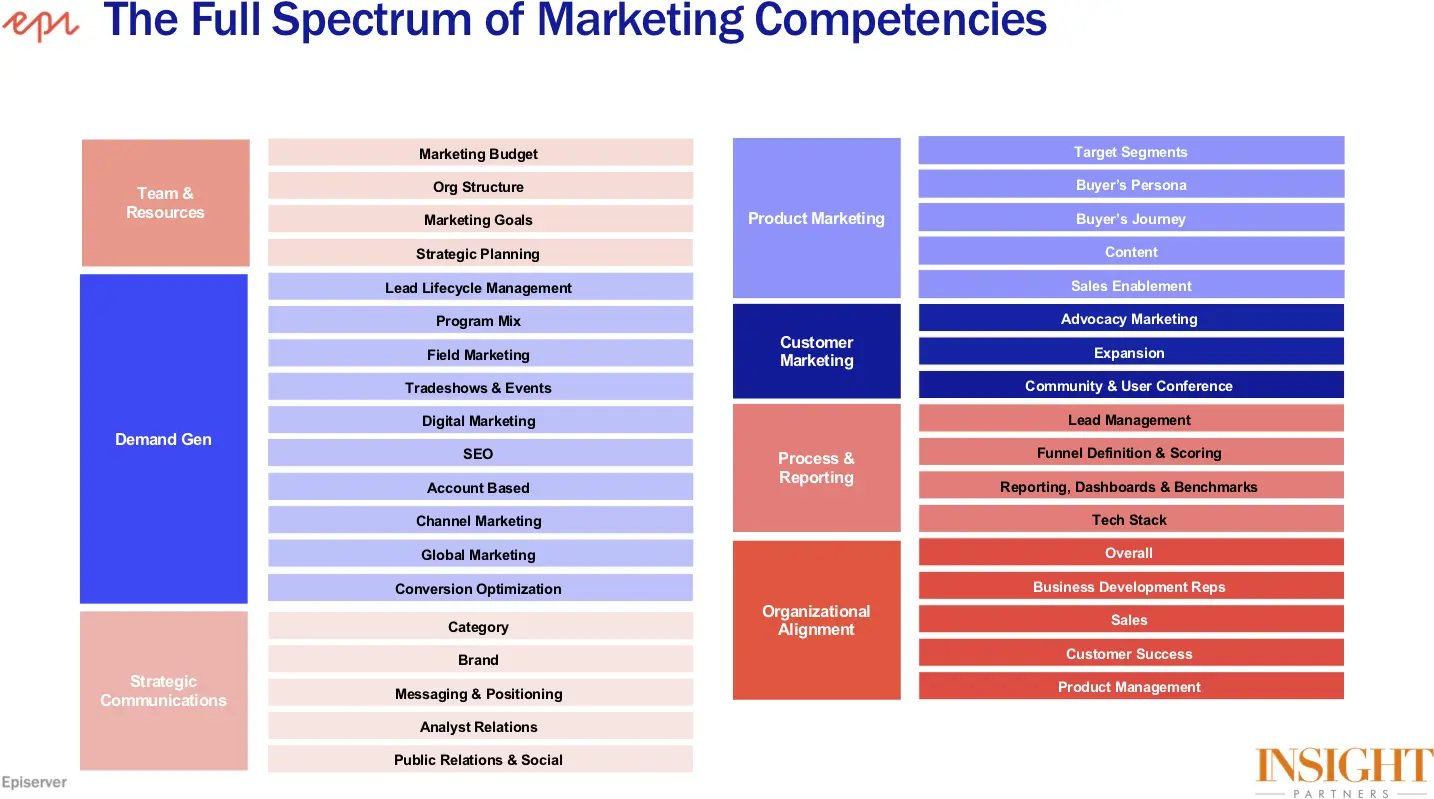New state of high-tech marketing
Us marketers love to philosophize on all the things we can give those hungry-for-knowledge buying groups throughout the long and drawn out saga that is the enterprise sales cycle.

Kate Murphy

For years, if not decades, we’ve gotten comfortable with the relatively standardized way things are done and how teams are organized. These core marketing competencies that we’re all a part of haven’t changed all too drastically – until now, that is.
The Covid-19 pandemic impacted and changed all facets of life considerably, almost overnight. Businesses shored up their resources and many, rightfully so, were beyond frugal with any new commitments. Months down the line from the beginning of the pandemic, we still don’t know how long the sudden and long-terms effects will play out. We very much remain in the ‘new state’ of things as us marketers have no doubt coined it.
Recently, Insight Partners’ Gary Survis joined Alex Atzberger, Episerver’s CEO, for a roundtable discussion around this ‘new state’ of marketing within the high-tech industry. Insight Partners is a leading global private equity and venture capital firm that invests in high-growth technology and software companies that are driving transformative change in their respective industries. Survis shared his research and experience of working with dozens of portfolio companies on the emergent effects of Covid-19 on core marketing competencies as well as some tried-and-tested ways businesses adapted that will remain crucial to continue using at scale.

Core marketing competencies as presented from Gary Survis' research
The best way to garner the full value of the research is to watch the replay of the discussion (here.) However, if you’re short for time we’ve highlighted the two key takeaways that were evident throughout the roundtable: speed and intimacy.
1. The Fast Eat the Slow
As quickly as the pandemic hit North America, businesses had to respond and react at an equal or pre-emptive pace. In-person events were quickly replaced with a rat-race of digital content that created such phenomenon as “zoom fatigue” for all the poor B2B participants who were bombarded with invites to countless webinars. What was born as an immediate necessity to combat the volume and velocity of this rampant digital content was a better ability to create meaningful digital engagement every step of the way, and often in places – a website, a social account – that had previously only been used to provide air-cover for offline marketing activities.
Six months ago, net-new logos for customer acquisition were the order of the day. While that’s still the end game, there’s been new laser focus on account-based programs to ensure any and every engagement is with prospects who are in-market and looking, including existing customers. In all likelihood, the biggest opportunity within this fast change has no doubt been cross-sell and upsell opportunities within your existing customer base. There’s no better engaged prospect than your own customer and much less time is needed to present compelling offers to them in a meaningful way.
Top-of-funnel marketing is still relatively straightforward. However, it’s more critical than ever to drive engagement with only those who will produce the highest win rate. We’re all trying to navigate through the friction - enterprise and vendors alike. It will be those that can continue to overcome the challenge with creativity who will reach those in-market prospects and make a sale. Even as we move forward, the speed to deliver these things ahead of others will be among the determiners of success. It’s certainly not the time to put those creative thinking hats to rest. Regardless if you’re prospecting or interacting with customers, and at whatever pace, the way to make those critical engagements even more meaningful is through intimacy.
2. Time to get intimate
Intimacy may not be the first word that comes to mind when thinking of B2B, well, anything. However, it’s defined as ‘close familiarity.’ Through that lens, it pretty much sums up what sales, product teams, marketing, and customer success all want with their prospects and customers - and vice versa.
Prior to Covid-19, most companies relied on events, large and small, to foster connection and that next-level engagement we previously thought possible only through in-person experiences. While offline events certainly won’t be wiped off marketing’s repertoire forever, they became a quick impossibility with the onset of the pandemic for more reasons than one. Their loss was mournful, but time isn’t a privilege companies have been afforded in order to account for their extended absence. As noted earlier, speed and the ability to make consequential digital connections are a critical pairing.
Intimacy can play out in a myriad of ways and will be important to maintain as we continue to move forward. It can be a deeper understanding of your own existing content to better serve to your prospects or hosting smaller, more dynamic digital events rather than a one-way webinar.
Throughout the pandemic, nurturing your present customers’ trust may have been with strong communication that you are firm in your offerings and will be on hand to serve their needs, now and in the months and years ahead. Even as we move forward, it’s going to be imperative to continue supporting them with offers and content relevant and valuable to their operating realities and needs to build on that trust and kindle intimacy.
Whatever your company may have experienced throughout this pandemic, there are no doubt numerous takeaways to learn from. Some things that were applicable over the last few months may fall to the wayside as we return to some semblance of normal. However, for those things that did work, now is not the time to forget what we learned. The way forward is with continuing to create those meaningful and intimate connections as soon as they become a need for your best accounts or customers.
Now that you’ve learned a few tricks, what will you do with them?
If you’re interested in how your current content is helping, or even hurting your company’s chances of getting closer to your customers, learn more about learn more about Episerver Content Recommendations here.
